The following blog was written by Courtney Kemnitz a digitiser in the Herbarium.
Since 2021 we have increased our digitisation capacity with the goal of getting to 1 million specimens imaged by Autumn 2024. Courtney is working through our British and Irish collections. This series of blogs will spotlight the species that have been completed
The name “bluebell” can cause confusion! While it can refer to various bell-shaped “blue” flowers1 globally, in Britain and Ireland, it typically applies to two distinct native plants:
- English Bluebell (Hyacinthoides non-scripta)2: This is the widespread bluebell with drooping flowers carpeting woodlands in spring.
- Scottish Bluebell (Campanula rotundifolia): This delicate flower has upright bell-shaped flowers and thrives in grassy areas throughout Britain and Ireland. However, to avoid confusion with the English bluebell, it’s more commonly called a harebell outside of Scotland.
For the purposes of this post, English bluebell and Scottish bluebell will be used to distinguish between the two.
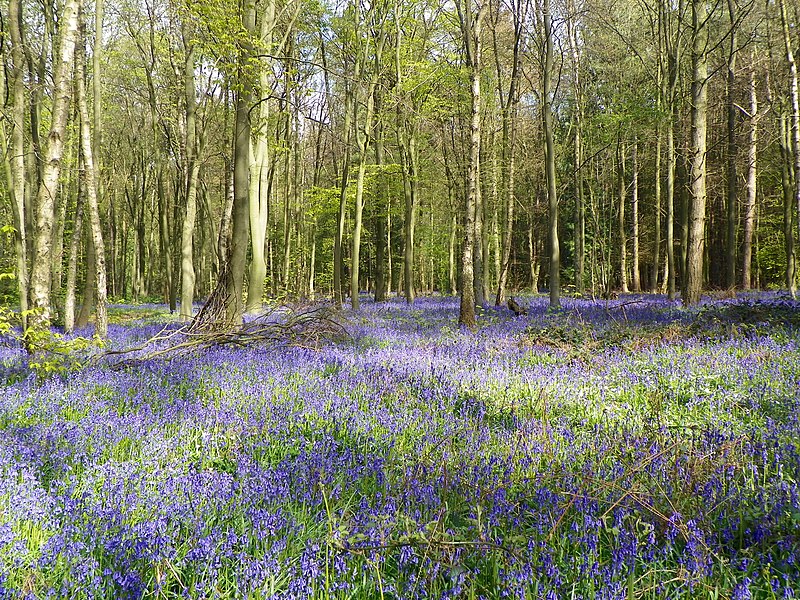

1 Ever wondered why these purple flowers are called bluebells? The name “bluebell” appeared before the word “purple” even existed in English.
2 NOTE: The Spanish bluebell, Hyacinthoides hispanica, is often confused with the English bluebell, Hyacinthoides non-scripta. Like the English bluebell it is also found all over the UK and Ireland but it is NOT native. It is believed to have been introduced around the 17th century and since then, has escaped gardens and has posed a threat to the native species. These two species often hybridize and are called Hyacinthoides x massartiana.
The Blurring Lines of “Bluebell” and “Harebell”
Historically, the terms “bluebell” and “harebell” have been used interchangeably for both plants, especially in older references. This has caused much confusion and has resulted in a mixed lore surrounding the English and Scottish Blubell.
However, both flowers appear to have a strong association with magic, fairies, witches, and the devil. This is evident in some of their common names, such as “fairy flower,” “fairy bells,” and “witches’ thimbles.” On the darker side, there are names like “Aul’ Man’s Bells” (referring to the devil) and “devil’s bells”. All these various names and associations suggest that disturbing either flower is ill-advised.
For more thorough explanation of the intertwining folklore of these two plants see the blog post “The Ringing of the Bluebells: Untangling the Folklore of These Popular Flowers” by podcast Hypnogoria
Shakespeare’s Harebells
Shakespeare’s confusing use of “harebell” in Cymbeline (Act IV, Scene 2) shows how easy it is to mistake these flowers:
“I’ll sweeten thy sad grave: thou shalt not lack
The flower that’s like thy face, pale primrose, nor
The azured hare-bell, like thy veins.”
Shakespeare, Cymbeline, Act IV, Scene 2
Illustrations accompanying the scene in various publications depict different blooms. However, the use of the word “azured” suggests Shakespeare likely intended the Hyacinthoides non-scripta, a flower that is a brighter blue than Campanula rotundifolia. But we will never know for sure which he intended.
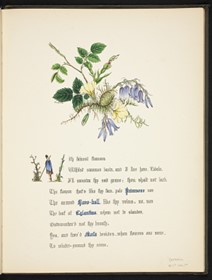
The Flowers of Shakespeare’, illustrated by Jane (1845)
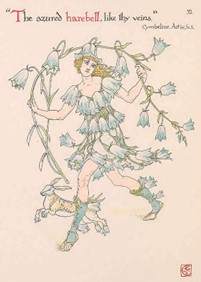
“Flowers from Shakespeare’s Garden: A Posy from the Plays”, Illustrated by Walter Crane (1909)
A closer look
| English Bluebell | Scottish Bluebell | |
| Name: Hyacinthoides non-scripta (L.) Chouard ex Rothm. | Name: Campanula rotundifolia L. | |
| Family: Asparagaceae | Family: Campanulaceae | |
| First formally described in 1753 by Carl Linnaeus as a species in the genus Hyacinthus. | First formally described in 1753 by Carl Linnaeus. | |
| !! Hyacinthoides non-scripta is protected in the UK under the Wildlife and Countryside Act, 1981. |
Common Names* in the British Isles and the Isle of Ireland
| English Bluebell: Hyacinthoides non-scripta | Scottish Bluebell: Campanula rotundifolia | |||
| English: | Bluebell, English bluebell, English harebell, fairy flower, wild hyacinth | English: | Bluebell, Harebell, Scottish Bluebell, witches’ thimbles, Fairies’ thimbles/bells | |
| Scots: | Cra’ tae [kraa tae], Gowk’s hose [Go-wks hohs] | Scots: | Aul’ man’s bells [Oh-l mahnz belz], Gowk thimmles [go-wk fim-lz] | |
| Scots Gaelic: | Fuath-mhuc (foo-ah-vooc], Lili ghucagach (lily goo-ca-kach or uh-li goo-ca-kach] | Scots Gaelic: | Barr-cluigeannach[baar-kloo-gan-ach], Brog na cubhaig [brog na koo-vaig] | |
| Irish (Gaeilge): | Coinnle corra [quinn-la curra] | Irish (Gaeilge): | méaracán gorm [may-ur-ak-awn gur-um] | |
| Welsh: | clychau’r gog [cluh-ch-ire-gorg] | Welsh: | cloch y bugail [kloh y by-geh-il] | |
| Manx: | Gleih-muc (wild hyacinth) | Manx: | Marrane Ferrish (Fairy Thimble) | |
*list not exhaustive

Vol. ,Figure 39. “Deutschlands Flora in Abbildungen” by Johann Georg Sturm (Painter: Jacob Sturm), 1796
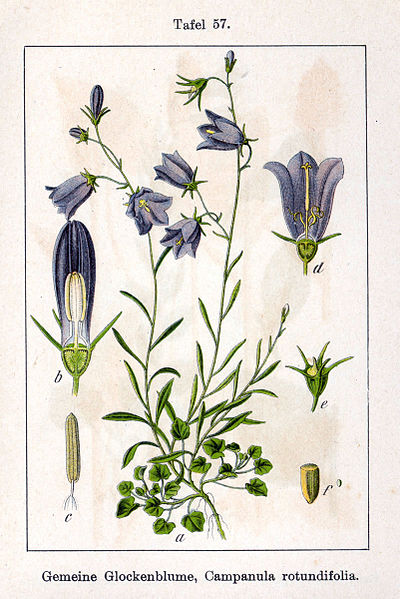
Vol. ,Figure 57. “Deutschlands Flora in Abbildungen” by Johann Georg Sturm (Painter: Jacob Sturm), 1796
At first glance, the English (Hyacinthoides non-scripta) and the Scottish (Campanula rotundifolia) bluebell may look similar, but with a closer look their differences become quite obvious.
This table provides a quick visual guide to help you differentiate between them.
| English Bluebell | Scottish Bluebell | |
| Feature | Hyacinthoides non-scripta | Campanula rotundifolia |
| Stem | curved, smooth | Slender, wiry |
| Flowers | Typically, rich blue-violet 6 separate narrow petals with straight sides and curves outwards at the end, one-sided drooping formation Typically ,5-12 flowers per plant | Typically, lighter blue-violet 5 fused petals that curve slightly outwards, one-sided formation flowers loosely cluster at tip of stem Typically, 1-3 flowers per plant |
| Leaves | Long, narrow, glossy green, cluster at the base | Rounded/heart-shaped (at the base) narrow (higher up the stem), alternate arrangement |
| Size | Up to 50cm | Up to 40cm |
| Habitat | Woodlands, shady areas. Often an indicator species to identify ancient woodland. | Woodlands, meadows, grasslands, rocky areas |
| Scent | Distinct sweet scent | scentless |
| Flowering season | Spring; Mid-April to late May a slow grower, taking at least five years for a seed to develop into a bulb. | Summer; June-October |
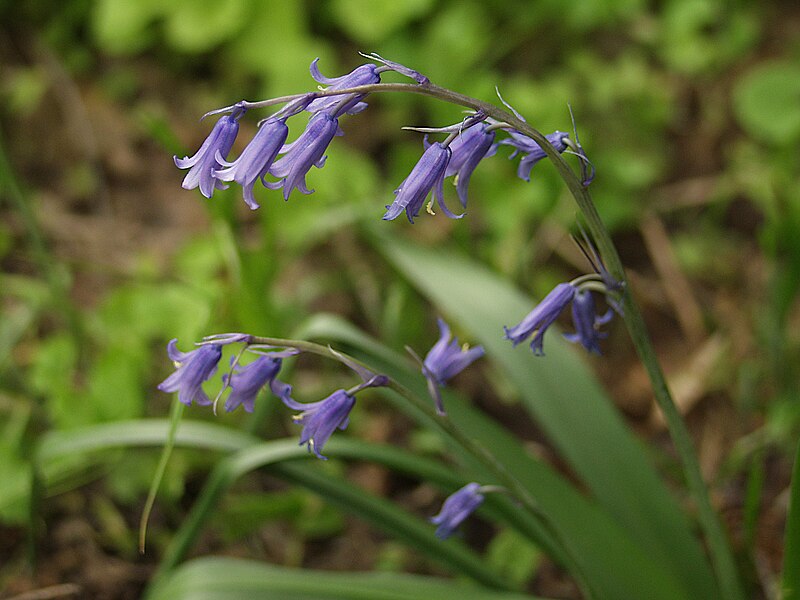
(Cbaile19, CC0 1.0 Deed)
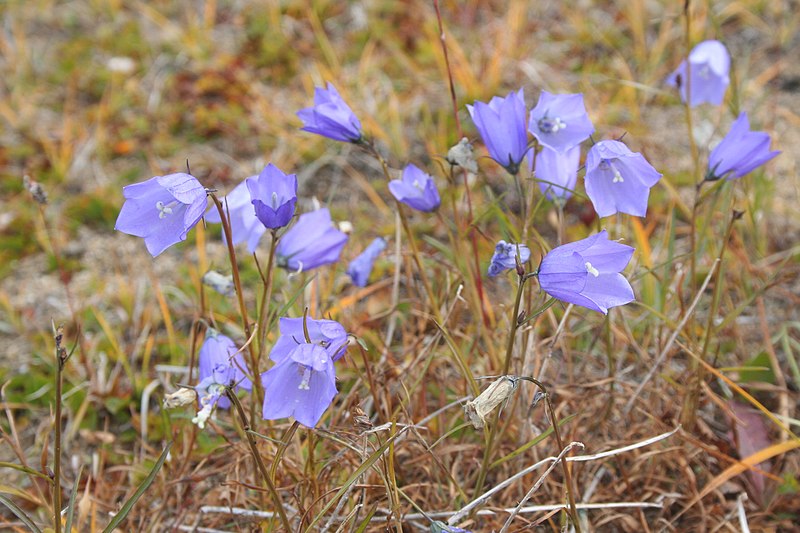
(Pmau, CC BY-SA 4.0 DEED)
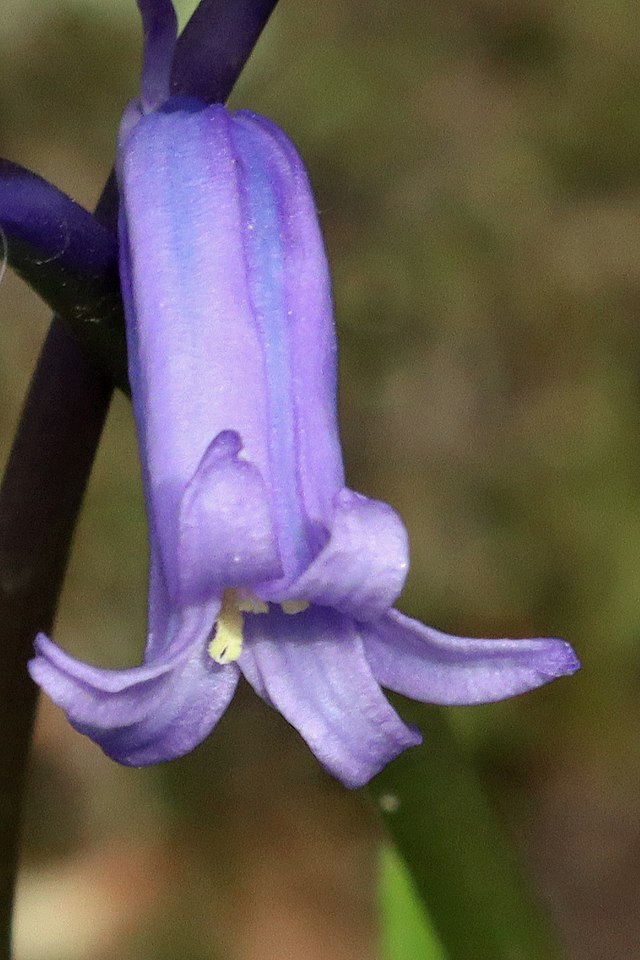
(Roy Lowry, CC BY 4.0 Deed)

(Bluebells (Campanula rotundifolia) by Anne Burgess CC BY-SA 2.0)
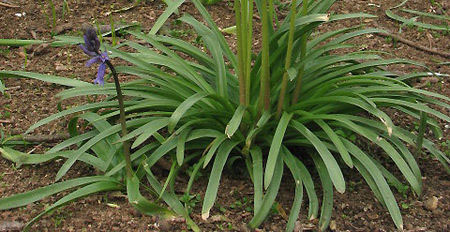
(Evelyn Simak / Not all bluebells are blue / CC BY-SA 2.0)
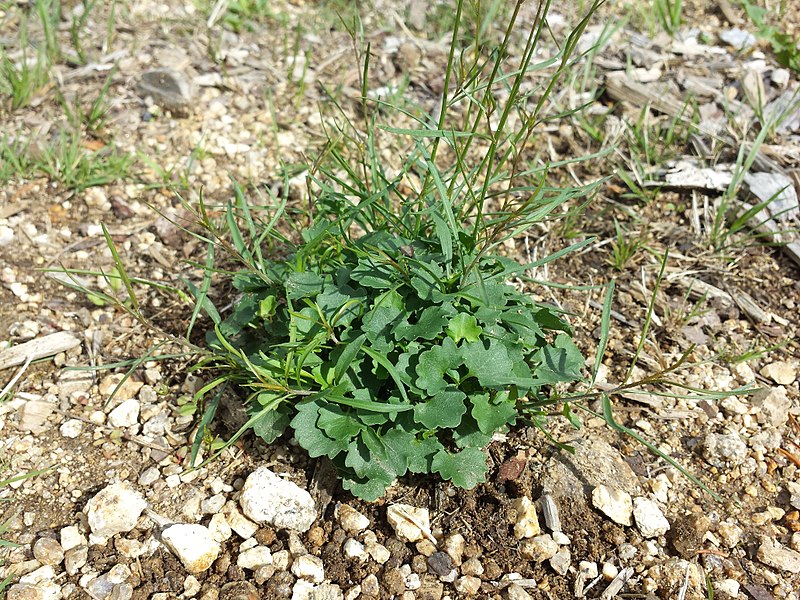
(Stefan.lefnaer, CC BY-SA 4.0 DEED)
Royal Botanic Garden Edinburgh (RBGE) Herbarium Specimens
The digitisation of these species within our British Isles collection is now complete. This allows us to see how our collections are distributed and compare this to the species range data recorded by the Botanical Society of the British Isles.
Total number of specimens held in the British Collection within the Herbarium*:
English bluebell, Hyacinthoides non-scripta: 55 specimens
Scottish bluebell, Campanula rotundifolia: 82 specimens
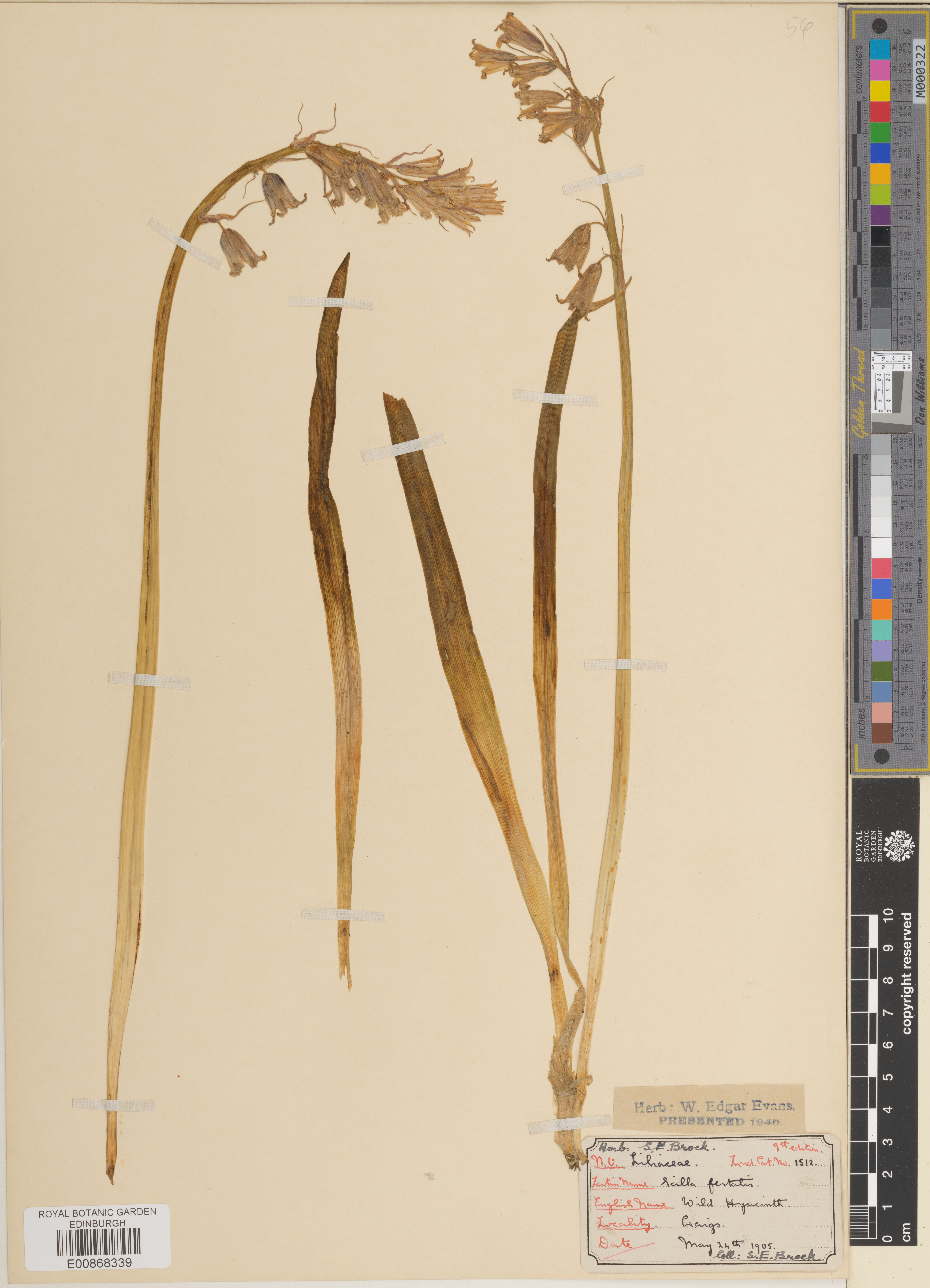
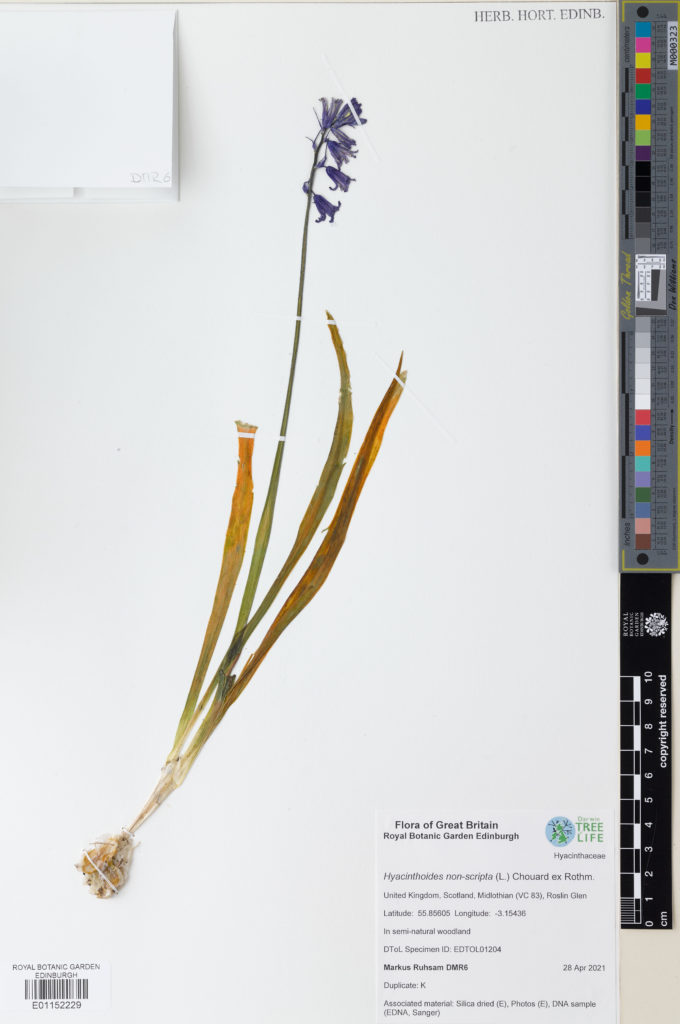
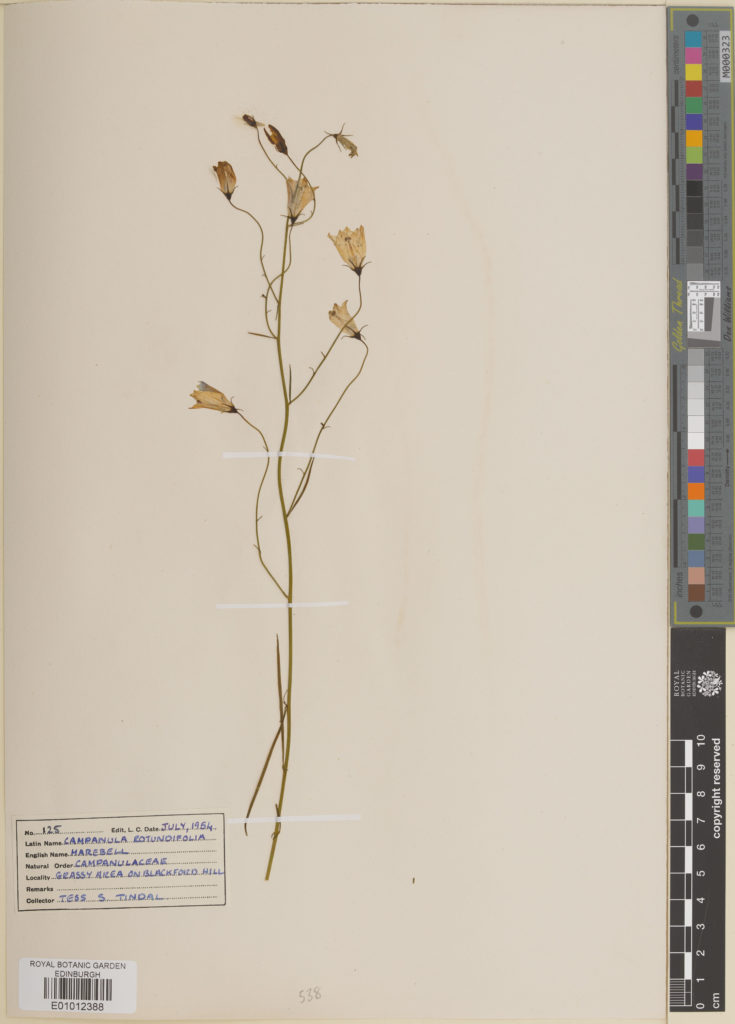
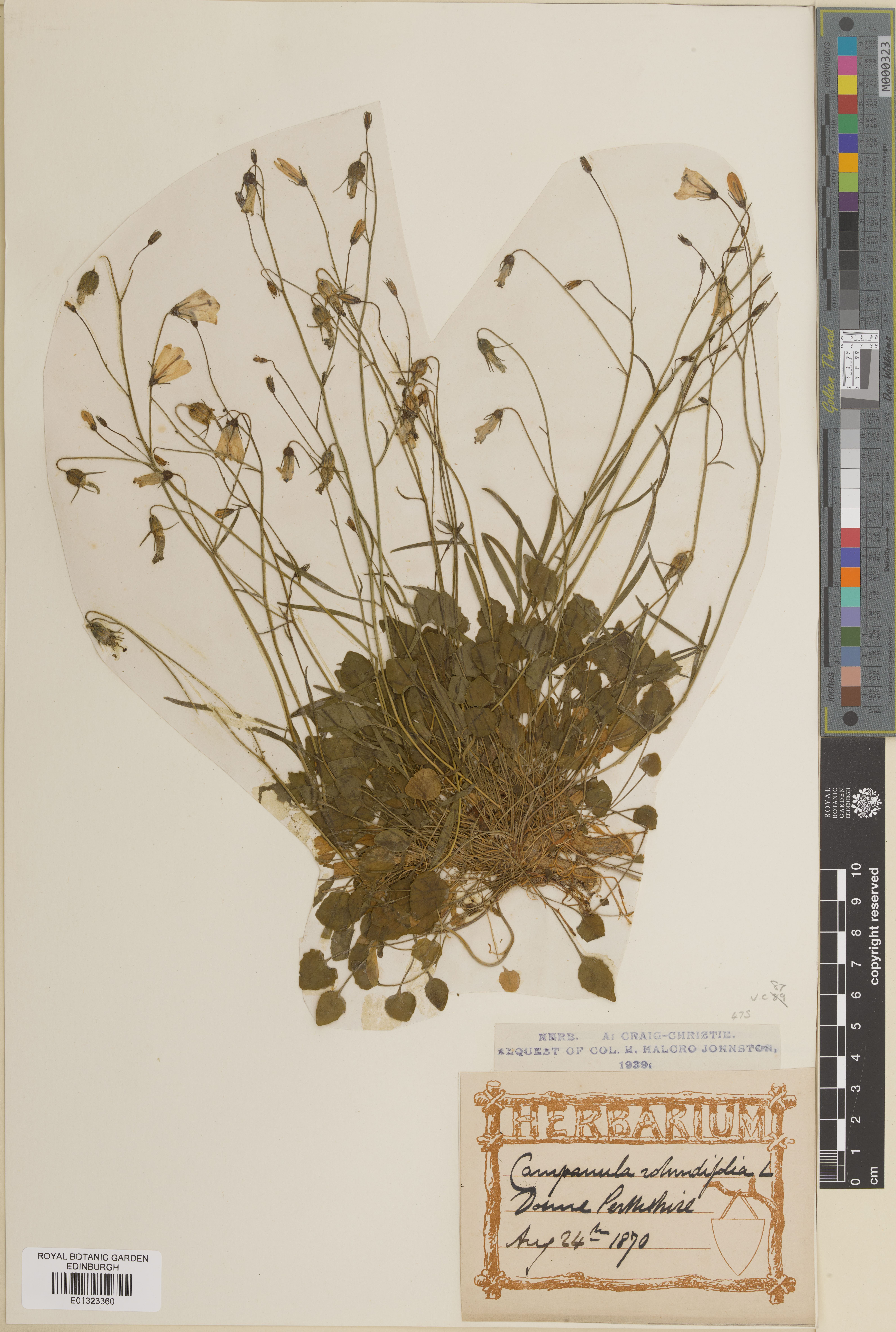
*Please note, that the Herbarium contains more specimens from other parts of the world. These figures are not included.
Breakdown by Geographical Region
| English Bluebell: Hyacinthoides non-scripta | Scottish Bluebell: Campanula rotundifolia | |||
| Country | Specimen Count | Specimen Count | ||
| Scotland | 40 | 65 | ||
| England | 13 | 14 | ||
| Wales | 1 | 1 | ||
| Channel Islands | 0 | 0 | ||
| Ireland (Republic of Ireland & Northern Ireland) | 1 | 1 | ||
| Unknown | 0 | 1 | ||
Distribution
Both species are found throughout the isle of Ireland and the British Isles (though Campanula rotundifolia is sparsely distributed on the isle of Ireland). Both have been extensively planted, making it challenging to distinguish its native and non-native range in certain regions.
The native range of Hyacinthoides non-scripta native range is quite narrow in comparison with the Campanula rotundifolia range: Western Europe to Northwest Portugal. While the Campanula rotundifolia native range is much large ranging from Europe (including Iceland) to Russia and the Far East.
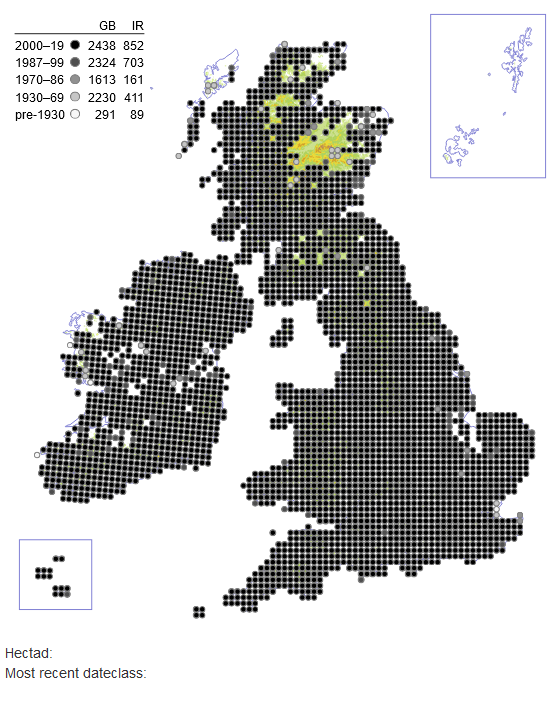
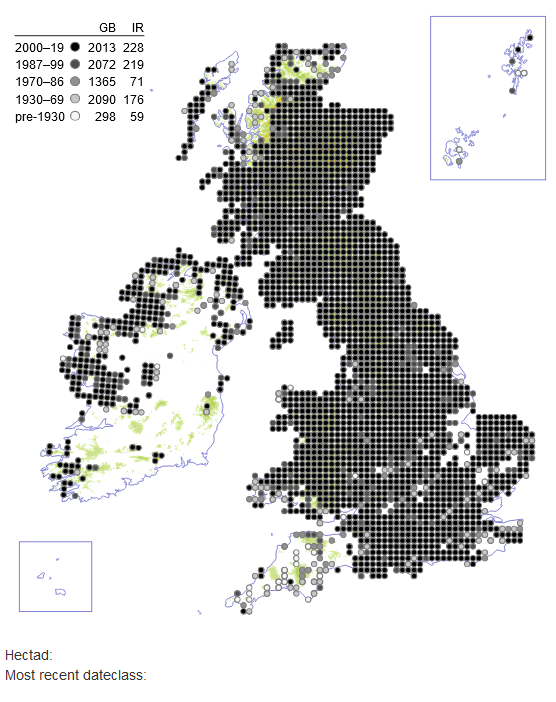
Uses, Past & Present in the British Isles and the Isle of Ireland
| English Bluebell: Hyacinthoides non-scripta | Scottish Bluebell: Campanula rotundifolia | |
| Medicine | Medicine | |
| Starch for Elizabethan ruffs and sleeves | Food | |
| Adhesive for bookbinding and fletching arrows | Natural dye (creates a blue dye for textiles, was used particularly for tartans) | |
| Scent for soaps and lotions | ||
| Ornamental |
Literary References from the British Isles and the Isle of Ireland
The inclusion of “bluebells” and “harebells”, in literature and folklore signifies its cultural importance in the British Isles and the isle of Ireland. However, due to interchangeable common names, it is not always obvious which flower is referenced in specific stories.
The Bluebell is the sweetest flower
That waves in summer air:
Its blossoms have the mightiest power
To soothe my spirit’s care.
Excerpt from “Bluebell” by Emily Brontë, 1846.
Thou shalt, at one glance, behold
The daisy and the marigold;
White-plum’d lillies, and the first
Hedge-grown primrose that hath burst;
Shaded hyacinth, alway
Sapphire queen of the mid-May;
And every leaf, and every flower
Pearled with the self-same shower.
Excerpt from “Fancy” by John Keats, 1820. Hyacinthoides non-scripta as the “Sapphire Queen of the mid-May”.
For me’—she stooped, and, looking round,
Plucked a blue harebell from the ground,—
‘For me, whose memory scarce conveys
An image of more splendid days,
This little flower that loves the lea
May well my simple emblem be;..
Excerpt from “The Lady of the Lake”, Canto Second. The Island, part IX by Sir Walter Scott, 1883
[Translation from Welsh]
They come when the cuckoo comes
When she goes, they go too
The wild nostalgic scent,
The old enchanting hue.
Arriving, then bidding goodbye,
Ah, but their days are few
Excerpt from “Clychau’r Gog” [Bluebells] by R. Williams Parry (1952). Translated by Joseph P Clancy
This is an indirect reference to Hyacinthoides non-scirpta, many common names associated with this plant reference the cuckoo bird.
[Translation from Irish Gaelic]
Blue as a hyacinth were the eyes. Red as rowan-berries the lips. Very high, smooth and soft-white the shoulders. Clear-white and lengthy the fingers. Long were the hands. White as the foam of a wave was the flank, slender, long, tender, smooth, soft as wool.
Exerpt from “Togail Bruidne Dá Derga” (The Destruction of Da Derga’s Hostel), Author Unknown (c.11th Century). Translated by Whitley Stokes (2011).
And gaily the trembling bells peal out
Excerpt from “The Romance of Nature; or, The Flower-Seasons” by Louisa Anne Twamley (1836).
With gentle tongue,
While elves and fairies career about
‘Mid dance and song.
Oh! roses and lilies are fair to see,
But the wild Blue Bell is the flower for me!
Interestingly, the “Blue Bell” of this verse is called a “Blue Harebell” in the previous verse, showing how the names and folklore for these wildflowers were often used interchangeably.
________________________________________________________________________________
While the name “bluebell” might cause confusion, look closer and you’ll see the English bluebell (Hyacinthoides non-scripta) and the Scottish bluebell (Campanula rotundifolia) are distinct. So next time you’re out and about, keep an eye out for these beautiful blooms. With a little knowledge, you can easily tell the English from the Scottish bluebell!

Leave a Reply